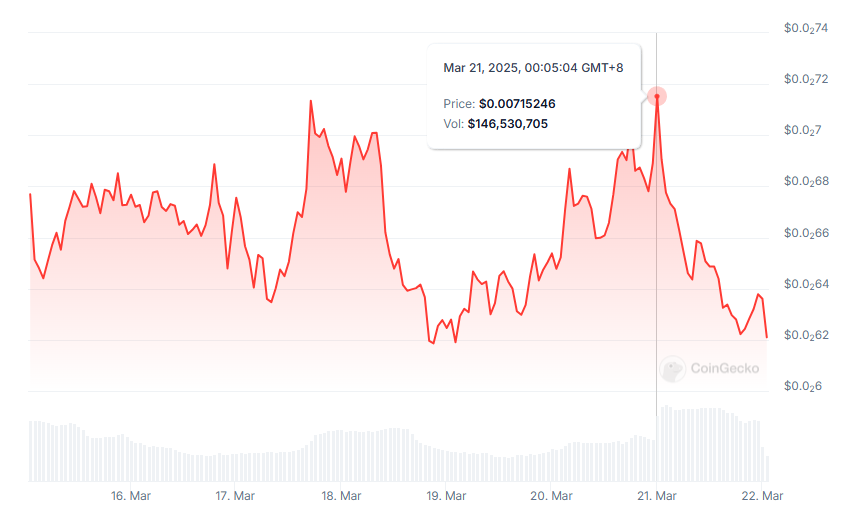Pudgy Penguins, an Ethereum top-tier Non-Fungible Token project with a cute penguin image that swept through the Web3 and Web3 world, officially launched its token $PENGU on the Solana public chain in late last year, causing a sensation.
Just about 4 months after the fat penguin's token launch, according to CoinDesk's report yesterday (21st), asset management company Canary Capital submitted the world's first SUI ETF application to the US Securities and Exchange Commission (SEC) earlier this week, and then submitted a PENGU ETF application.
First US ETF Holding Non-Fungible Tokens
The report points out that Canary's ETF will hold the following assets:
- PENGU token;
- Pudgy Penguins NFT series;
- And other digital assets such as SOL and ETH, with the official stating that these are necessary and accompanying assets for buying, selling, and transferring PENGU tokens and Pudgy Penguins NFT series.
PENGU Rises and Falls
According to CoinGecko data, after the news was released, the PENGU token once rose to a high of $0.00715246 on March 21st, but quickly fell back, currently at $0.0062, with a nearly 24-hour decline of 10%, and a market cap of $390 million.

Additionally, according to OpenSea data, the floor price of Pudgy Penguins NFT is currently at 9.73 ETH, down 2.4% in the past 24 hours.
Analysts Criticize: Cryptocurrency ETF Has Become a Joke
Before Trump took office, the US had already criticized Bitcoin and Ethereum spot ETFs last year; and Trump's friendly attitude towards cryptocurrency holdings has encouraged major asset management companies to successively submit spot ETF applications for various Altcoins, such as SOL, XRP, LTC, etc.
However, cryptocurrency researcher Alex Krüger commented yesterday on the PENGU ETF application that cryptocurrency ETFs are now a joke (as if any Altcoin could apply for an ETF):
After the fat penguin ETF application was submitted, the price hardly rose, and cryptocurrency ETFs have now become an irrelevant joke.
Most cryptocurrency ETFs fail to attract funds and even cause losses for issuers.







